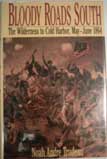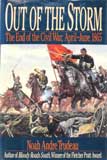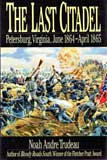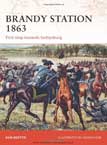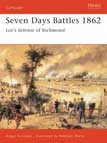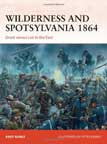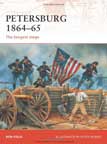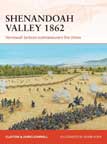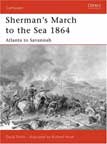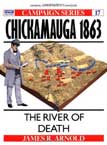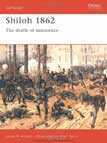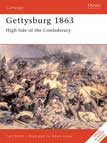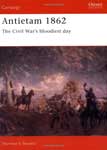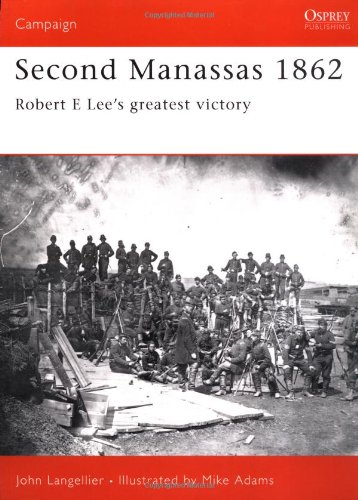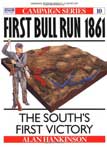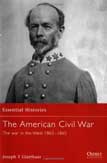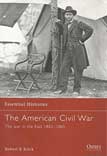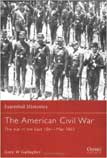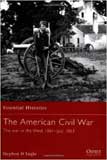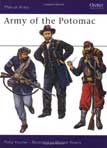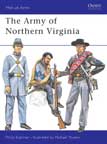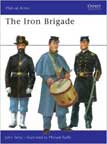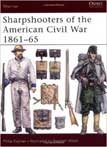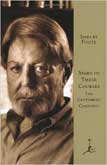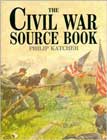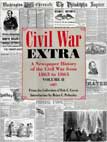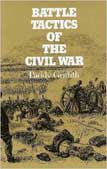

A detailed account of 40 days of battle during the American Civil War from the Wilderness to Spotsylvania, from North Anna to Cold Harbor. It draws upon diaries, letters, reminiscences, memoirs and regimental histories, and covers the experiences of soldiers, civilians and politicians.
Ulysses Grant's relentless hammering tactics prevented Robert E. Lee from regaining the strategic initiative in 1864, although the Southern general's defensive operations during May-June of that year are regarded by many as his greatest military accomplishment. It was during this campaign that Grant came to be called "The Butcher" because of the horrendous casualties he was willing to accept as he ordered assault after assault. He did not retreat after suffering tactical defeats in the battles of the Wilderness, Spotsylvania Courthouse and Cold Harbor, but continued to push his troops ever closer to the rebel capital of Richmond. Not a formal campaign study, this is a dramatic account told through the eyes of soldiers, civilians and government leaders. One of the elements historian Trudeau dramatizes is the shifting emotional reaction of President Lincoln as he worried whether Grant would prove as faint-hearted as other generals who had faced Lee in the field. When word was brought from Grant that "There is no turning back," the president literally kissed the messenger, for this was probably the most important of several historic turning-points in the four-year Civil War.
In this concluding volume of a trilogy, Trudeau ( Bloody Roads South ; The Last Citadel ) relies on firsthand accounts to tell the compelling story of the Confederacy's death throes. Robert E. Lee's surrender at Appomattox on April 9, 1865, marked only the beginning of the end: the Civil War had gone on too long to end in a single stroke. Confederate government was still intact, and large Confederate forces remained in the field. While Union cavalry ravaged northern Alabama, Union infantry stormed the fortress of Mobile. Men continued to die in obscure skirmishes from Texas to South Carolina. Trudeau's richly textured presentation never loses focus in depicting the complex course of events from the final days of the Army of Northern Virginia, through the assassination of Abraham Lincoln, to the growing recognition in the South and the North that the great national tragedy was finally over.
Perhaps no other battle or campaign of the American Civil War equalled the siege of Petersburg, Virginia. For 292 days, the war's final drama was played out over the fate of this once gracious Southern town, the last bulwark of the Confederacy. The book covers the 11-month siege of Petersburg.
This book follows the fighting in Virginia to early April 1865, shortly before Lee's surrender at Appomattox. The nine-month Petersburg campaign was, in the author's view, the South's Gethsemane ("the place where its moral character and its belief in its own righteous cause faced their ultimate testing"). In masterly fashion Trudeau tracks the tactical struggle as Gen. Ulysses S. Grant seeks weak spots in Gen. Robert E. Lee's lines while Lee, forced to spread his smaller army ever more thinly, contests Grant's flanking movements in a series of hard-fought battles. Trudeau also provides vivid glimpses of civilian life inside besieged Petersburg and describes President Lincoln's visits to Grant's headquarters during the siege. The campaign reached its climax with Gen. Philip Sheridan's victory at Five Forks, followed by an assault on the Confederate lines which broke Lee's resistance. This oft-ignored major campaign of the Civil War receives expert examination here.
The road to Gettysburg began at Brandy Station on June 9, 1863 during the American Civil War (1861-1865). However, the cavalry clash in Culpeper County, Virginia, counts for more than just the opening round of Lee's second invasion of the North. The battle showed both sides that the Federal cavalry had now come of age, that Blue and Gray horsemen were now equal in ability. Early in the morning on June 9, Pleasanton launched his men, split into two divisions, across the Rappahannock at Beverley's Ford to the north of Brandy Station and Kelly's Ford to the south. Stuart was caught completely unaware by these maneuvers and his lines and headquarters were nearly overrun until reinforcements helped to stabilize the situation. Following 12 hours of bitter fighting the Union forces withdrew back across the river, having matched the Confederate cavalry in skill and determination for the first time in the War between the States in what was the largest and most hotly contested clash of sabers in this long and bloody war.
This book describes the battle with a step-by-step analysis of the proceedings, illustrated with detailed maps, birds-eye-views and full color battlescene artwork.
Osprey's examination of the short yet crucial campaign of the American Civil War (1861-1865). When General Robert E. Lee took command of the Army of Northern Virginia, the Confederacy was in crisis. Lee changed all that in a brilliant, week-long campaign. On 26 June the Confederates struck, fighting two hard-fought battles in two days at Mechanicsville and Gaine's Mill. The ferocity of the Confederate assaults convinced McClellan that he was outnumbered. Unable to keep the Confederates at bay, the Union army was recalled to Washington. Despite losing a quarter of his men, Lee had saved Richmond, and inflicted a humiliating defeat on the Army of the Potomac.
Grant and Lee fought near Chancellorsville, VA in a confusing series of battles amidst brush thickets and wildfires. Unlike previous campaigns, Grant simply kept flanking Lee, trying frontal assaults at Spotslvania's 'mule-shoe' and Cold Harbor along the way to laying seige to Richmond and Petersburg.
In May 1864 the Union Army of the Potomac under General George Meade had been in a leisurely pursuit of the Confederate Army of Northern Virginia for nearly a year after the defeat of the Rebels at Gettysburg. Confederate commander General Robert E. Lee still retained his awe-inspiring reputation for wrecking Union armies that got too close to Richmond and Meade was still cautious. His tactics at Gettysburg were defensive and he was unsure that he was able to take the offensive against Lee. However, things changed when President Abraham Lincoln appointed General Ulysses S. Grant to command all Union armies. Grant came east and laid out a comprehensive strategy for the rest of the war.
In the deep South, General William T. Sherman would march out of Tennessee to cut the Confederacy in half by taking Atlanta. Grant would lead the Army of the Potomac across the Rapidan River and march on Richmond. He had the manpower and equipment to accomplish his objective, easily outnumbering Lee. Lee, on the other hand, was far from beaten and saw Grant as just another Union general to be sent packing, much as he had sent McClellan, Burnside, Pope and Hooker away two years before. As Grant's army slowly entered the tangle of woods beyond Fredericksburg known as the Wilderness, Lee planned to pin him there and destroy him as he struggled to emerge. The stage was set for the campaign that would forever dictate the terms of the Civil War in the East.
In 1864, Petersburg, Virginia became the setting for one of the last great campaigns of the American Civil War (1861-1865) and the longest siege in American History. After his failure to capture Richmond in the Spring, General Ulysses S. Grant decided to strangle the life out of the Confederate Army of Northern Virginia by surrounding the city of Petersburg and cutting off General Robert E. Lee's supply lines.
The ensuing siege would carry on for nearly ten months, involve 160,000 soldiers, and see a number of pitched battles including the Battle of the Crater, Reams Station, Hatcher's Run, and White Oak Road. But around these battles were long days of living in trenches, enduring poor diet and winter weather, and suffering constant artillery bombardment. In April of 1865, Grant ordered a sweeping offensive against the beleaguered Confederates, which broke Lee's right flank and forced him to retreat to Appomattox Court House, where he surrendered a week later.
Written by an expert on the American Civil War, this book examines the last clash between the armies of U.S. Grant and Robert E. Lee.
On the morning of June 9 1862, victorious Confederate troops under the command of Major General "Stonewall" Jackson began a general advance in pursuit of the withdrawing Union forces following the battle of Port Republic. This was the sixth major battle fought between Union and Confederate troops during a three-month period in the Shenandoah Valley of Virginia in the spring of 1862. It was also, effectively, the final battle of what became known as Jackson's Valley Campaign. The campaign, which had begun with a Confederate defeat at the First Battle of Kernstown on March 23, became a showcase for the maneuverability and mobility of Jackson's forces as, heavily outnumbered, they kept the larger Union forces pinned and down and off balance.
"Stonewall" Jackson had performed his task of keeping General McDowell's Union forces away from the Peninsula Campaign better than anyone could have expected, and following his final victory at Port Republic he was able to force march his men to join up with Lee at Richmond in time to take part in the Seven Days Battles that saved Richmond for the Confederacy.
Jackson became a legend for his actions in the Valley Campaign. His army marched over 600 miles in 48 days to win five major battles. His forces, at no time numbering more than 17,000 men, overwhelmed a combined Union force of 50,000, demonstrating in every case his ability to maneuver his troops into a tactical advantage of at least four to three.
The March to the Sea was the culmination of Union General William T. Sherman's 1864 campaign during the American Civil War (1861-1865) and was a devastating example of "total war." Confederate hopes in 1864 hinged on frustrating Union forces in the field and forcing Abraham Lincoln out of office in the November elections. However, this optimism was dampened by Sherman's success in the battle of Atlanta that same year.
Riding on the wave of this victory, Sherman hoped to push his forces into Confederate territory, but his plan was hindered by a Confederate threat to the army's supply lines.
After much delay, he boldly chose to abandon these, forcing the army to live off the land for the entirety of the 285-mile march to Savannah, destroying all war-making capabilities of the enemy en route, and inflicting suffering not only on Confederate troops, but also on the civilian population. Despite the vilification that this brutal tactic earned him, the march was a success.
Supported by contemporary photographs, detailed maps, bird's eye views, and battlescene artwork, this title explores the key personalities, strategies, and significant engagements of the march, including the battles of Franklin and Nashville, and the ultimate fall of Savannah to the Union, to provide a detailed analysis of the campaign that marked the "beginning of the end" of the American Civil War.
Osprey's examination of the battle at Chickamagua, one of the decisive campaigns of the American Civil War (1861-1865). By the Autumn of 1863 the Confederacy was in dire straits. In a colossal gamble, Confederate President Jefferson Davis stripped forces from all the major Confederate armies to reinforce the Army of Tennessee in a last ditch attempt to crush the Union. On 19th September the Confederates attacked the Union army along Chickamauga creek south of Chattanooga. On the second day of bloody fighting the entire Union right collapsed and the army retreated headlong for Chattanooga, all except General George H. Thomas' Corps who fought on doggedly until nightfall delaying the confederate advance, saving the Union and earning his fame as the "Rock of Chickamauga".
Osprey's study of the Battle of Gettysburg (1863), one of the decisive battles of the American Civil War (1861-1865). The Confederate invasion of the Northern states was General Lee's last great gamble. By taking the war to the Union he hoped to force Lincoln into peace negotiations, or win support from the European powers who were watching events closely from across the Atlantic. Equally, Meade's Army of the Potomac needed to regain it's fighting credibility after the setbacks of Fredericksburg and saw this as an opportunity to redeem its honour. The clash of 150,000 soldiers from both sides would ultimately decide the fate of a nation.
Osprey's examination of the Battle of Antietam, which was one of the critical battles of the American Civil War (1861-1865). The fortunes of the South were riding high after the resounding victory at Second Manassas. While Bragg and Kirby Smith invaded Kentucky, Lee's invasion of Maryland was intended to maintain the Southern offensive momentum and to win the recognition of the European powers. But his bold plan was compromised—and at the Antietam River the Army of Northern Virginia was fighting for its very life. This title examines the build-up to Hooker's attack, and details the famous clashes at Bloody Lane and Burnside Bridge.
Osprey's examination of the culminating battle of the American Civil War (1861-1865). “There never was such a campaign, not even by Napoleon" wrote Confederate General Pender of the Second Manassas campaign in which the gray-bearded Virginian, Robert E Lee, came as close as he ever would to exterminating his Northern enemies. In so doing, Lee established himself as the South's pre-eminent military commander and the Army of Northern Virginia as it's most powerful weapon. The fighting in northern Virginia left Union General John Pope's career in tatters and proved the South was a power to be reckoned with. This book's powerful account demonstrates that during that fateful summer of 1862 Lee's soldiers were fighting for anything but a lost cause.
At Bull Run, two inexperienced, ill-trained and poorly led armies clashed in the opening engagement of the American Civil War. Culminating in a stalwart defensive fight by Thomas 'Stonewall' Jackson's Virginia Brigade, this is the story of the Confederacy's first victory. The author investigates the personalities of the principal commanders and examines the opposing armies, showing how the widely varying uniforms of different units caused mistakes of identity which affected the battle at crucial points. Weapons, intelligence and the almost universal inexperience of troops on both sides are all discussed, helping to explain the events of the battle itself.
Union military forces suffered momentary defeat followed by sustained success in the Western Theater during the second half of the American Civil War. Following the Union's defeat at Chickamauga, Ulysses S. Grant took command at Chattanooga and orchestrated a striking victory which paved the way for a Union advance against Atlanta, a confederate city second in importance only to Richmond. This book traces the events that surrounded the capture of Atlanta, followed by Sherman's famous campaign of destruction through the southern interior which culminated in April 1865 with the surrender of the last major Confederate field army at Durham Station, North Carolina.
Great battles and famous commanders dominated the military history of the Civil War in the Eastern Theater during the period 1863-1865. This book includes revealing details of the clash at Gettysburg, Pennsylvania, the costliest battle ever waged in the Western Hemisphere, but, contrary to common belief, puts forward the theory that it was not a great turning point in the war. This book also examines the events that led to Robert E Lee accepting generous terms of surrender from Ulysses S Grant, bringing the war in Virginia to a close. A fascinating look at this crucial point in the American Civil War.
[Note: These were originally called "Essential Histories"] The United States saw long-simmering sectional tensions erupt into fighting at Fort Sumter, South Carolina, in April 1861, beginning what would become the most cataclysmic military struggle in the western world between Waterloo and the First World War. This volume focuses on events in the Virginia theater during the conflict's first two years, highlighting Union and Confederate strengths and weaknesses, leadership and strategy on each side, and the ways in which events on the battlefield influenced politics, diplomacy, and debates about emancipation. Osprey Essential Histories are complete yet concise studies of each major conflict in history.
[Note: These were originally called "Essential Histories"] The American Civil War's vast Western Theater witnessed enormously important military campaigning during the period 1861 - 1863. This book, the third in a four-volume series, examines the geographical, logistical and strategic factors that shaped fighting in this theater, as well as assessing officers who played key roles . It covers the story of Ulysses S Grant's important capture of rebel positions before marching south to win the battle of Shiloh, as well as that of Albert Sidney Johnston, the pride of the Confederacy. Finally, it details the dramatic events of the siege of Vicksburg, the Confederates final fortress.
Shelby Foote, who cut such a courtly figure in Ken Burns's PBS series The Civil War, is an uncommonly graceful writer as well, and this careful study of the 1863 Gettysburg campaign assumes the contours of a classical tragedy. Foote positions readers on the field of battle itself, among swirling smoke and clattering grapeshot, and invites us to feel for ourselves its hellishness: "men on both sides were hollering as they milled about and fired, some cursing, others praying ... not a commingling of shouts and yells but rather like a vast mournful roar." Foote's fine book is history as literature, and a welcome addition to any Civil War buff's library.
Katcher's entry in the field of Civil War publishing will intrigue the legions of Civil War buffs who yearly consume vast quantities of writing. Not a traditional campaign history, this title focuses on the experiences, equipment, uniforms, and tactics of army, navy, and state forces of both sides. Short biographies of major figures and an annotated "Sources" section are provided, and illustrations and quotations or excerpts from first-person accounts abound. The book is organized by broad topic, which could make its use in a reference collection problematic; librarians may prefer to place it in the circulating collection. Middle-aged eyes may have problems with the small type, and a number of minor typographical errors will give the true Civil War aficionado the thrill of discovery while not materially affecting the value of the title. Recommended for libraries collecting widely on the Civil War.
A collection of articles from newspapers published during the Civil War. If you are into Civil War history, this is the ultimate source! Countless books have been written on the ironies and tradgedies of America's Civil War, but in these collections, the happenings of the day come alive.
Just reading the first newspaper, you will be transported back in time. Into the homes, Churches, courtrooms, schools and meeting houses you will become a part of history. No book written today can do justice to information straight from the source. Within these covers the event is not just a story but a true-to-life experience!
Was the Civil War really the birthplace of modern battlefield tactics? Paddy Griffith argues that despite the use of new weapons and of trench warfare techniques, the Civil War was in reality the last Napoleonic-style war. Rich in description and analysis, this is a book of interest both to military historians and to Civil War buffs.
Roman Lower Rhine army proclaims its commander, Vitellius, Emperor
John II begins his reign as Catholic Pope
Emperor Joseph II orders Jews of Galicia Austria to adopt family names
Spain recaptures Granada from the Moors (Granada Day)
Tsar Ivan the Terrible march to Novgorod begins
Spain and Catholic France sign Saint League of Joinville
Battle at Kinsale, Ireland: English army beats Spanish
Spanish force in Ireland surrender to the English at Kinsdale
Staatsoper Hamburg opens with Theiles "Adam und Eva"
British troops occupy Calcutta India
1st revolutionary flag displayed
Austria ends interregation torture
Georgia is 4th state to ratify US constitution
Free black community of Philadelphia petitions Congress to abolish slave
US Sen Thomas Pickering is 1st senator censured (revealed confidential documents communicated by the President of the US)
Liberator, abolitionist newspaper, begins publishing in Boston
1st Curling club in US (Orchard Lake Curling Club) opens
1st photo of the Moon (French photographer Louis Daguerre)
1st US wire suspension bridge for general traffic opens in Penn
Colonel Charles Stone is put in charge of organizing DC militia
SC seizes inactive Ft Johnson in Charleston Harbor
Construction of Brooklyn Bridge begins
King Amadeus I of Spain inaugurated at 25
1st Test match hat-trick, Fred Spofforth at the MCG
British battleship Thunder explodes in Gulf of Ismid, 9 die
Dr Benjamin E Mays, named President of Atlanta Board of Education
Northwestern League (minor baseball league) organized, Rockford, Illinois
Because of anti-monopoly laws, Standard Oil is organized as a trust
Gen Wolseley receives last distress signal of General Gordon in Khartoum
Alice Sanger becomes 1st female White House staffer
1st US commemoratives and 1st US stamp to picture a woman issued
Battle at Doornkop, South Africa (Boers beat Dr Jamesons troops)
E Verlinger begins manufacturing 7" single-sided records (Montreal)
Gustave Charpentiers opera "Louise, " premieres in Paris
President Roosevelt shuts down post office in Indianola Miss, for refusing to accept its appointed postmistress because she was black
Elara, a satellite of Jupiter, discovered by Perrine
Japanese troops capture Port Arthur
Canadian branch of the Royal Mint opens in Ottawa
1st official Dutch 11 city skate (Minne Hoekstra in 13:50)
1st junior high schools in US opens (Berkeley, California)
Brooklyn Dodgers President Charles Ebbets announces purchase of grounds to build a new concrete-and-steel stadium to seat 30,000
Philips installs research department in Eindhoven
Dodgers trade Casey Stengel and Cutshaw to Pittsburgh for Grimes and Mamaux
NHL Montreal Wanderers disband after Westmount arena burns down
Anti-British uprising in Ireland
Lithuania gains independence
10,000 US union and socialist organizers arrested (Palmer Raids)
1st religious service radio broadcast in US, KDKA-Pittsburgh
DeYoung Museum in Golden Gate Park opens
Ku Klux Klan surprise attack on black residential area Rosewood Florida, 8 killed (compensation awarded in 1995)
Gorno-Badakhshan Autonomous Region established (now in Tadzhik SSR)
US and Canada agree to preserve Niagara Falls
Young gang shoot dead 6 police in Springfield, Missouri
Bruins beat Rangers in New York 13-3
Ijmuider fishing strike begins (till July 11th)
US troops leave Nicaragua
1st state liquor stores open, in Pennsylvania
Bradman scores 253 NSW vs. Queensland, 204 mins, 29 fours 4 sixes
Bruno R Hauptmann trial begins for kidnap-murder of Lindbergh baby
1st electron tube to enable night vision described, St. Louis, Missouri
Bradman scores 357 for South Africa vs. Victoria, 424 minutes, 40 fours
Book publisher Simon and Schuster founded
Bradman scores 107 South Africa vs. Victoria, his 4th consecutive century
28 nations, at war with Axis, pledge no separate peace
German troops in Bardia surrender
Japanese troops occupy Manila Philippines
1st use of helicopters during warfare (British Atlantic patrol)
Allied air raid on Neurenberg
Kentucky begins 130 home basketball game win streak, ends in 1955
Radio Orange ends cooperation at Liese-Aktion
Mahatma Gandhi begins march for peace in East-Bengali
WNDT (now WNET) TV channel 13 in New York-Newark, New York (PBS) begins
KDKA TV channel 2 in Pittsburgh, PA (CBS) begins broadcasting
"Pal Joey" opens at Broadhurst Theater NYC for 542 performances
NBA Baltimore Bullets begin a 32 game road losing streak
Herman Wouks "Caine Mutiny, " premieres in New York City
1st "Bob Cummings Show" premieres on NBC (later on CBS)
Poujadists / communists win French parliamentary elections
USSR launches Mechta (Luna 1) for 1st lunar fly-by, 1st solar orbit
Cuban Dictator Fulgencio Batista flees
1st redshank old world shore bird reported in North America (Halifax)
John F Kennedy announces run for US Presidency
John Reynolds sets age of solar system at 4,950,000,000 years
Senator John F Kennedy, announces his candidacy for President
1st AFL Championship Game, Houston Oilers beat LA Chargers 24-16
Nighttime version of "Password" with Allen Ludden premieres on CBS
Ayub Khan elected President of Pakistan
Failed assassination attempt on President Nkrumah of Ghana
Martin Luther King Jr begins a drive to register black voters
New York Jets sign quarterback Joe Namath
Obverse design of all Canadian coins is changed to depict present-day
1st Jewish child born in Spain since 1492 expulsion
Green Bay Packers beat Cleveland Browns 23-12 in NFL championship game
"Zizi" closes at Broadway Theater NYC after 49 performances
Christian Barnard performs 2nd heart transplant
KBHK TV channel 44 in San Francisco, CA (IND) begins broadcasting
"Fig Leaves Are Falling" opens at Broadhurst Theater NYC for 4 performances
"Soviet Sport" calls Emile Zatopek a public enemy
Dutch premiere of musical "Hair" in Amsterdam
US population is 293,200,000; Black population: 22,600,000 (11.1%)
A barrier collapses at Ibrox Park football ground at end of a soccer match in Glasgow Scotland, killing 66
"Rothschilds" closes at Lunt-Fontanne Theater NYC after 505 performances
Mariner 9 begins mapping Mars
Miami Dolphins beat Baltimore Colts 21-0 in AFC championship game
55 mph speed limit imposed by Richard Nixon
Worst fire in Argentine history destroys 1.2 million acres
US Department of Interior designates grizzly bear a threatened species
Bowie Kuhn suspends Braves owner Ted Turner for one year due to tampering charges in Gary Matthews free-agency signing
Rhino Records releases their 1st album "Wildmania"
30th Islander shut-out opponent-Glenn Resch 9-0 vs. Vancouver
Gavaskar gets twin tons for India for the third time (vs. West Indies)
68th Australian Men Tennis: Guillermo Vilas beat John Sadri (76 63 62)
Mary Terstegge Meagher swims female record 200 m butterfly (2:05.65)
Sylvester Clarke knocks out spectator with brick, WI vs. Pakistan
"Camelot" closes at Winter Garden Theater NYC after 48 performances
70th Australian Mens Tennis: Johan Kriek beats S Denton (62 76 67 64)
Islanders start 23 undefeated home streak (21-0-2) 14 straight wins
SD Chargers beat Miami Dolphins, 41-38 in 13:52 of OT
"Annie" closes at Alvin Theater NYC after 2,377 performances
"Sophisticated Ladies" closes at Lunt-Fontanne NYC after 767 performances
Don Muraco beats Pedro Morales to become WWF Intercontinental Champ
Gary Trudeau takes a 20-month break from writing "Doonesbury"
Ken Anderson of Cincinnati completes record 20 consecutive passes
Miami beats Nebraska in Orange Bowl for college football championship
Riot in Tunis kills over 100
90th hat trick in Islander history-Brent Sutter
Australia beat WI by innings at SCG, Bob Holland 10 match wkts
Egyptian President Mubarak reappoints Coptic Pope Shenuda III
Nevada-Las Vegas beats Utah 142-140, highest college basketball score
Undefeated BYU becomes college football champions
191.66 million shares traded in New York Stock Exchange
New York Islander, Mike Bossy, scores his 500th goal
Penn State upsets Miami in Fiesta Bowl for college football champ
Ashland Oil storage tank spills 3.8 million gallons, Penn
Mulroney and Reagan sign Canada-US free trade agreement
Notre Dame beats West Virginia for college football championship
UCLA wins a record 7th consecutive bowl game
Dow Jones hits record 2,800 (2,810.15)
Sting joins wrestlings 4 Horsemen (Flair, Arn Anderson, Ole Anderson)
Colorado wins its 1st AP national title poll
Test debut of Shane Warne, vs. India at Sydney
"Gypsy Passion" closes at Plymouth Theater NYC after 55 performances
"Abe Lincoln in Illinois" closes at Beaumont NYC after 40 performances
"Shakespeare after My Father" closes at Helen Hayes NYC after 266 performances
Battles between army and rebellious indians in South Mexico, kill 57
Bus crashes in Luzon Philippines, 29 killed
Carquest Bowl 5: South Carolina beats West Virginia, 24-21
Most distant galaxy yet discovered found by scientists using Keck telescope in Hawaii (est 15 billion light years away)
Howard Stern Radio Show premieres in Columbus OH on WBZX 99.7 FM
Autopsy of Chris Farley shows he overdosed of opiates and cocaine
